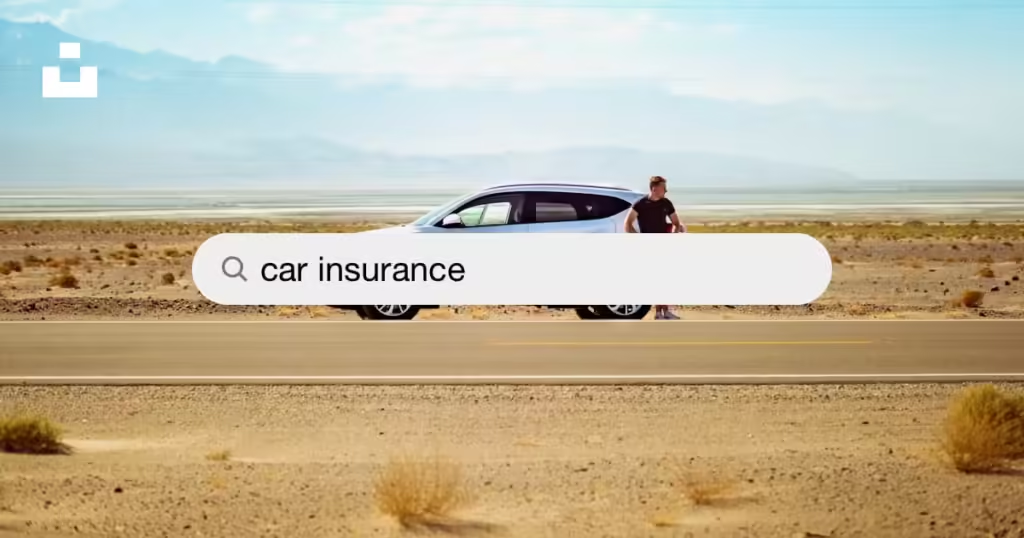Demystifying Car Insurance: Everything You Need to Know to Drive Worry-Free

Driving can be a source of freedom and independence, but it also comes with the responsibility of ensuring your safety on the road. That’s where car insurance enters the picture. In this comprehensive guide, we aim to demystify car insurance, providing you with everything you need to know to drive worry-free.
Understanding the different types of car insurance coverage
Car insurance coverage is essential for protecting yourself, your vehicle, and others in the event of an accident or damage. However, navigating the different types of coverage can be overwhelming. To help you make sense of it all, let’s explore the main types of car insurance coverage available.
1. Liability Coverage: Liability coverage is the most basic type of car insurance and is required in most states. It provides financial protection if you cause an accident that results in bodily injury or property damage to others. This coverage helps pay for the injured party’s medical expenses, property repairs, and legal fees if they decide to sue.
2. Collision Coverage: Collision coverage is designed to cover the cost of repairing or replacing your vehicle if it is damaged or totaled in an accident, regardless of who is at fault. This coverage is particularly important if you have a newer or more valuable vehicle. Keep in mind that collision coverage typically comes with a deductible, which is the amount you must pay out of pocket before the insurance kicks in.
3. Comprehensive Coverage: Comprehensive coverage protects your vehicle against non-collision damages, such as theft, vandalism, fire, or natural disasters. It also covers damages caused by hitting an animal or if your car is damaged while parked. Similar to collision coverage, comprehensive coverage usually comes with a deductible.
4. Personal Injury Protection (PIP) Coverage: PIP coverage, also known as no-fault insurance, is required in some states. It provides medical expenses, lost wages, and other related costs for you and your passengers, regardless of who is at fault in an accident. PIP coverage can be particularly beneficial if you don’t have health insurance or have limited coverage.
5. Uninsured/Underinsured Motorist Coverage: Uninsured/underinsured motorist coverage protects you if you’re involved in an accident with a driver who doesn’t have insurance or has insufficient coverage to fully cover your damages. This coverage can help pay for medical expenses, lost wages, and damage to your vehicle.
Understanding the different types of car insurance coverage is crucial for selecting the right policy that meets your needs. Now, let’s move on to the factors that can affect your car insurance rates.
Factors that affect car insurance rates
Car insurance premiums are not one-size-fits-all. Several factors come into play when determining the cost of your car insurance. Understanding these factors can help you anticipate and manage your insurance costs effectively. Here are some key factors that insurers consider when determining your car insurance rates:
1. Age and Driving Experience: Younger drivers with less experience typically face higher insurance rates, as they are statistically more likely to be involved in accidents. On the other hand, older drivers with many years of driving experience may be eligible for lower rates.
2. Driving Record: Your driving record plays a significant role in determining your car insurance rates. Insurance companies will look at factors such as speeding tickets, accidents, and other violations. A clean driving record with no history of accidents or traffic violations can help lower your premiums.
3. Vehicle Type: The type of vehicle you drive can impact your insurance rates. Generally, high-performance cars, luxury vehicles, and sports cars are more expensive to insure due to their higher repair and replacement costs. On the other hand, safe and reliable vehicles with advanced safety features may qualify for lower rates.
4. Location: Where you live can affect your car insurance rates. Insurers consider factors such as the crime rate, population density, and frequency of accidents in your area. If you live in a high-crime or accident-prone area, you may face higher insurance premiums.
5. Credit Score: Believe it or not, your credit score can influence your car insurance rates. Studies have shown a correlation between credit history and insurance claims. Insurers often use credit-based insurance scores to predict the likelihood of a policyholder filing a claim. Maintaining a good credit score can help lower your insurance rates.
Now that you understand the factors that affect car insurance rates, let’s explore how you can choose the right car insurance policy for your needs.
How to choose the right car insurance policy
Choosing the right car insurance policy requires careful consideration of your needs, budget, and risk tolerance. To help you make an informed decision, follow these steps:
1. Assess Your Coverage Needs: Start by evaluating your coverage needs. Consider factors such as the value of your vehicle, your driving habits, and your financial situation. If you have a new or valuable vehicle, comprehensive and collision coverage may be essential. On the other hand, if you have an older vehicle with a low market value, you may opt for liability coverage to meet the minimum legal requirements.
2. Compare Quotes from Multiple Insurers: Don’t settle for the first insurance quote you receive. Take the time to shop around and compare quotes from different insurers. Each insurer has its own pricing model and criteria, so it’s essential to get multiple quotes to ensure you’re getting the best coverage at the most competitive price.
3. Review Coverage Limits and Deductibles: When comparing insurance policies, pay attention to the coverage limits and deductibles. Coverage limits refer to the maximum amount an insurer will pay for a claim. Higher coverage limits provide more protection but can also result in higher premiums. Deductibles, on the other hand, represent the amount you must pay out of pocket before the insurance coverage kicks in. A higher deductible can lower your premiums, but it also means you’ll have to pay more in the event of a claim.
4. Consider Additional Coverage Options: Depending on your needs, you may want to consider additional coverage options, such as roadside assistance, rental car reimbursement, or gap insurance. These add-ons can provide extra peace of mind and protection but may come at an additional cost.
5. Research the Insurer’s Reputation: Before finalizing your decision, research the reputation of the insurance company. Look for customer reviews and ratings to gauge their customer service, claims process, and overall satisfaction. Choosing a reputable insurer with a track record of excellent customer service can save you headaches down the road.
By following these steps, you can ensure that you choose a car insurance policy that aligns with your needs and budget. However, there are also ways to save money on car insurance without compromising coverage. Let’s explore some practical tips for reducing your insurance costs.
Tips for saving money on car insurance
Car insurance premiums can add up over time, but there are several ways to save money without sacrificing coverage. Consider implementing the following tips to reduce your car insurance costs:
1. Bundle Your Policies: Many insurance companies offer discounts if you bundle multiple policies, such as auto and home insurance, with them. Consolidating your policies with one insurer can lead to significant savings.
2. Take Advantage of Discounts: Ask your insurance provider about available discounts. Common discounts include safe driver discounts, multi-policy discounts, good student discounts, and discounts for vehicles with safety features. Taking advantage of these discounts can help lower your premiums.
3. Maintain a Good Driving Record: Keeping a clean driving record can go a long way in reducing your insurance costs. By obeying traffic laws, avoiding accidents, and practicing safe driving habits, you can qualify for lower rates over time.
4. Increase Your Deductible: Consider increasing your deductible if you can handle a higher out-of-pocket expense in the event of a claim. A higher deductible typically leads to lower premiums.
5. Drive Less: Some insurance companies offer low-mileage discounts for drivers who travel fewer miles annually. If you have a short commute or rarely use your vehicle, inquire about this discount.
6. Improve Your Credit Score: As mentioned earlier, maintaining a good credit score can positively impact your car insurance rates. Pay your bills on time, keep your credit utilization low, and monitor your credit report regularly to ensure accuracy.
Saving money on car insurance is possible with these tips, but it’s important to remember that the cheapest policy may not always provide the best coverage. Strike a balance between affordability and sufficient protection.
Common car insurance myths debunked
Car insurance can be a complex and confusing topic, leading to various myths and misconceptions. Let’s debunk some of the most common car insurance myths to help you make better-informed decisions:
1. The Color of Your Car Affects Your Insurance Premiums: Contrary to popular belief, the color of your car has no impact on your insurance premiums. Insurance companies base their rates on factors such as the make, model, age, and safety features of your vehicle.
2. Your Insurance Covers Personal Belongings Stolen from Your Car: While comprehensive coverage protects against theft or vandalism of your vehicle, it typically doesn’t cover personal belongings stolen from your car. Personal belongings are usually covered by your homeowner’s or renter’s insurance policy.
3. Your Insurance Rates Will Automatically Increase After an Accident: While an at-fault accident can lead to an increase in your insurance rates, not all accidents result in higher premiums. Your rates may remain unchanged if you have accident forgiveness coverage or if the accident was minor and you have a clean driving record.
4. You Don’t Need Car Insurance if You Have a Comprehensive Warranty: A comprehensive warranty provides coverage for repairs due to mechanical breakdown but does not protect you in the event of an accident or liability claims. Car insurance is still necessary to cover damages to others and their property.
5. Your Insurance Covers Regular Wear and Tear: Car insurance is designed to cover sudden and accidental damages, not regular wear and tear. Maintenance and repairs due to normal wear and tear are typically the responsibility of the vehicle owner.
By debunking these myths, you can approach car insurance decisions with a clearer understanding of the facts.
Conclusion: Drive worry-free with the right car insurance coverage
Car insurance is an essential component of responsible driving. Understanding the different types of coverage, the factors that affect insurance rates, and how to choose the right policy can help you navigate the world of car insurance with confidence.
Remember to assess your coverage needs, compare quotes, and consider additional coverage options before making a decision. Don’t forget to take advantage of discounts, maintain a good driving record, and strive to improve your credit score to save money on car insurance.
By debunking common car insurance myths, you can make more informed decisions and avoid falling prey to misconceptions.
Now that you’ve armed yourself with knowledge, you can drive worry-free, knowing that you have the right car insurance coverage to protect yourself, your vehicle, and others on the road. So buckle up, drive safely, and enjoy the freedom of the open road!


